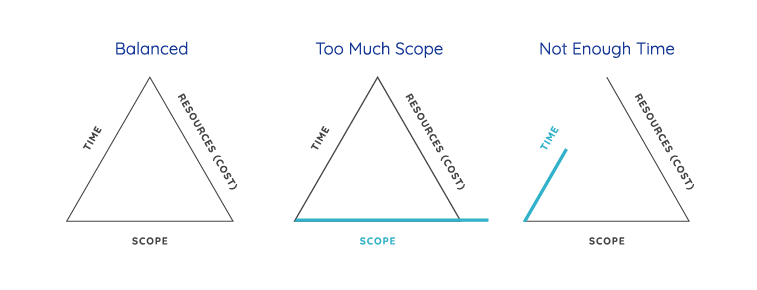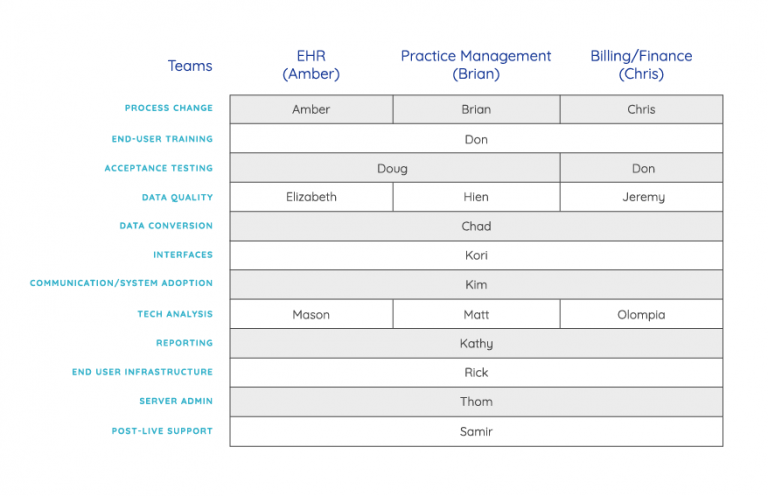There are a lot of moving pieces to coordinate before executing a successful EHR implementation. Considering your staff’s day-to-day workload won’t just disappear once implementation starts, most organizations struggle with the bandwidth or skill set to deliver a project of this size.
Like most large undertakings, developing your EHR Implementation plan is a balancing act. However, by understanding these challenges and setting up a team structure that promotes accountability, you can equip your organization for success with your electronic health record.

While the elements are simple in theory, keeping the triangle in balance is incredibly difficult in practice. There are many competing priorities and requests during the life cycle of a complex project. It can be easy to lose track of what you set out to do at the beginning of the project. Keeping the triangle in balance is what leads you to the highest quality system possible.
Make sure that you begin by assessing the all-important resourcing component. Who can you dedicate to project management? Testing? Training? Does your team have prior experience implementing an EHR? Every project is different in scope, scale, and available resources, so there isn’t a one-size-fits-all team structure. What we have found at Afia, however, is that there is a universal approach that works well across a variety of projects.
At a high-level, a sound project structure might look something like this:

This structure allows everyone to see how the project operates. Generally speaking, the project should be committee-driven to ensure effective communication and consensus among the stakeholders in the project. All critical decisions get funneled through the steering committees along with any project issues, scope changes, etc.
In the example below, you can see the tracks critical for project delivery. Each track is assigned a leader who dives into the details of each area. They work on streamlining workflows, designing forms, and completing all of the detailed tasks allocated to them by the project manager.
 There are a lot of ways to put the structure puzzle together. Your project could require more or less structure based on your needs. The key is to ensure that you are taking the time to analyze those needs to prepare your organization for success.
There are a lot of ways to put the structure puzzle together. Your project could require more or less structure based on your needs. The key is to ensure that you are taking the time to analyze those needs to prepare your organization for success.
Accountability is the cornerstone of success in any project and structure organizes the necessary roles of the project. Defining roles from the beginning can prevent unnecessary headaches down the road. Make sure your organization prepares for the changes coming your way, and the implementation will be a much smoother process.
This article is part of a series on “How to Implement an EHR” successfully. If you missed part 1, start here.
All Thought Leadership